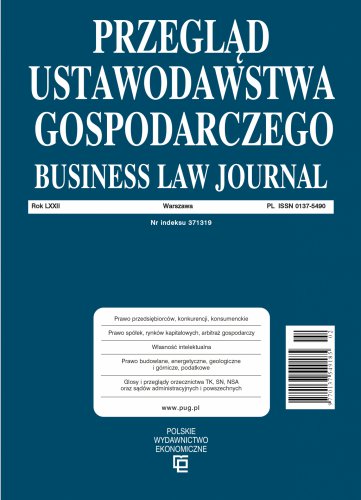Thin capitalization as a special form of debt financing used in policies pursued by holding companies
Niedostateczna kapitalizacja jako szczególna forma finansowania długiem w strategiach podatkowych holdingów międzynarodowych
The instrument of thin capitalization is of key importance in holding companies' international tax planning policies. This measure has been widely adopted by structures conducting cross-border business activity. That notwithstanding, shaping such policies through the use of thin capitalization requires a thorough knowledge of domestic regulations applicable in EU Member States that are concerned not only with the possibilities of employing this measure but also with the provisions limiting the use of thin capitalization. Analyzing the legal provisions on countering thin capitalization, it may be concluded that no measure offers absolute certainty that the negative consequences of the phenomenon of thin capitalization will be countered. The objective of the article is to indicate the most effective mechanisms adopted by international holding companies as well as the tax consequences that they bring about, and tax risk in particular.
Kluczowe znaczenie dla międzynarodowej polityki planowania podatkowego holdingów ma instrument niedostatecznej kapitalizacji. Zjawisko to jest dość powszechnie wykorzystywane przez struktury działające transgranicznie, jednak kreowanie polityki przy jego zastosowaniu wymaga biegłej znajomości regulacji wewnętrznych poszczególnych państw członkowskich UE, nie tylko odnoszących się do możliwości wykorzystywania tej konstrukcji, ale również przepisów ograniczających tzw. cienką kapitalizację. Celem artykułu jest wskazanie najbardziej efektywnych mechanizmów wykorzystywanych przez holdingi międzynarodowe i konsekwencji podatkowych, jakie za sobą niosą, a szczególnie unaocznienie, jakie jest ryzyko podatkowe.
Bibliografia
Bibliografia/References
Becker, J., Fuest, C. (2011). Optimal Tax Policy when Firms are Internationally Mobile. International Tax and Public Finance, 18(5).https://doi.org/10.1007/s10797-011-9168-x
Blouin, J. L., Huizinga, H., Laeven, L., Nicodeme, G., (2014). Thin Capitalization Rules and Multinational Firm Capital Structure. SSRN Electronic Journal, (7). https://doi.org/10.2139/ssrn.2379467
Brosens, L. (2004). Thin Capitalization Rules and EU Law. EC Tax Review, (4).
Buettner, T., Overesch, M., Wamser, G. (2015). Restricted Interest Deductibility and Multinationals' Use of Internal Debt Finance. International Tax and Public Finance, 23(5). https://doi.org/10.1007/s10797-015-9386-8
Gajewski, D. (2012). Choosen Tax-Related and Economic Aspects of Choosing the Method of Equity Financing in Relation to thin capitalization in the Countries of OECD. Contemporary Economics, 6(1). https://doi.org/10.5709/ce.1897-9254.36
Goyvaerts, D., Roggeman, A. (2019). The Impact of Thin Capitalization Rules on Subsidiary Financing: Evidence from Belgium, De Economist, 168(2). https://doi.org/10.1007/s10645-019-09353-x
Mardan, M. (2017). Why countries differ in thin capitalization rules: The Role of Financial Development. European Economic Review, 91. https://doi.org/10.1016/j.euroecorev.2016.09.003
Moor, M. (2010). Hybrid Financial Instruments and Entities. The Netherlands. Tax Planning International Review, (7).
Overesch, M., Wamser, G. (2010). Corporate Tax Planning and Thin Capitalization Rules: Evidence from a Quasi-Experiment. Applied Economics, 42(5). https://doi.org/10.1080/00036840701704477
Pijl, H., Hahlen, W. (2001). The New Advance Rulings Agreement and Advance Tax Ruling Practice In the Netherlands. Bulletin of International Fiscal Association, (12).
Ruf, M., Schindler, D., (2015). Debt Shifting and Thin-Capitalization Rules — German Experience and Alternative Approaches. Nordic Tax Journal, (1), 17-33. https://doi.org/10.1515/ntaxj-2015-0002
Valchy, J. (2008). Investigating a Thin Capitalization Rule: An Option-Based Analysis. Politicka Ekonomie, 56(5). https://doi.org/10.18267/j.polek.657

